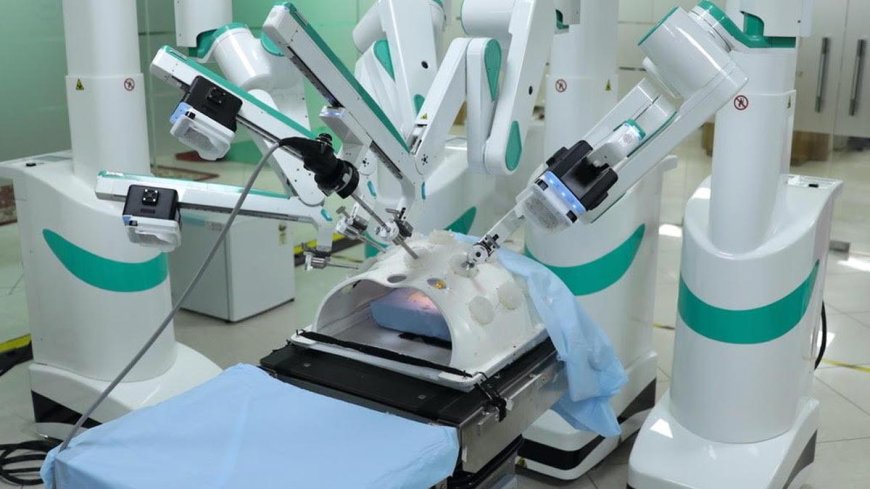India's Made-in-India Surgical Robot Just Performed Telesurgeries—And It's a Game-Changer
India’s first indigenous robotic system successfully performs telesurgeries, signaling a major leap in remote healthcare and surgical innovation. Discover how this homegrown marvel could reshape global surgery.

India just made medical history. For the first time ever, an indigenously developed robotic system has successfully performed telesurgeries, marking a revolutionary step forward for remote healthcare in the country. This breakthrough isn’t just a triumph of medical science—it’s a powerful testament to India’s growing self-reliance in cutting-edge technologies.
Developed by a team of Indian engineers and surgeons, this robotic surgical system enables real-time surgeries across cities, using high-speed 5G internet and AI-enhanced controls. What was once the stuff of science fiction is now saving lives across state lines, without requiring the surgeon or the patient to be in the same room—or even the same city.
What Is Telesurgery, and Why Does It Matter?
Telesurgery refers to a surgical procedure where the surgeon operates on a patient remotely using robotic arms and a high-definition video interface. Thanks to low-latency internet and precision robotics, these surgeries can be performed from hundreds—or even thousands—of kilometers away.
In India, where access to top-tier surgical expertise is often limited to metropolitan cities, telesurgery could democratize healthcare in a way no other innovation has before.
With the successful pilot of this indigenous system, the idea of a rural patient in Assam being operated on by a specialist in Mumbai is now a tangible reality.
The Technology Behind the Triumph
This robotic system was designed and manufactured entirely in India, aligning with the Atmanirbhar Bharat (Self-Reliant India) vision. It integrates:
-
AI-powered visual guidance for superior surgical accuracy
-
5G-based communication for near-zero lag time
-
Ergonomic haptic controls for real-time surgeon feedback
-
Remote monitoring dashboards that allow assistants to track vitals and adjust support systems from afar
India’s Centre for Development of Advanced Computing (CDAC), in collaboration with private med-tech startups, played a pivotal role in the system's R&D. According to the Department of Science and Technology, the robotic suite is already being considered for wider deployment across government hospitals.
Real Surgeries, Real Impact
During initial trials, surgeons based in Delhi successfully performed gallbladder removal and hernia repair surgeries on patients located in Bengaluru and Lucknow. The outcomes were successful, with no post-operative complications. The patients, who had limited access to advanced surgical facilities locally, were operated on by some of the country’s best specialists—remotely.
Dr. Priya Nair, one of the lead surgeons in the project, shared her experience:
“What amazed me was how natural the controls felt. Within minutes, I forgot I wasn’t in the same room as the patient. This is the future of surgery, especially in a country as vast and diverse as ours.”
Why This Breakthrough Is a Big Deal
Here’s what makes this innovation truly impactful:
-
Healthcare Equity: Surgeons in metro hospitals can now operate on patients in remote areas without time-consuming travel.
-
Crisis Response: In disaster zones or war-torn regions, robotic telesurgery can be deployed to treat injuries where local facilities are unavailable.
-
Training Revolution: Young surgeons can now observe and participate in real-time surgeries via virtual access, raising the bar for medical education in India.
Challenges and the Road Ahead
As exciting as the possibilities are, certain challenges must be addressed:
-
Regulatory Oversight: Telemedicine laws in India are evolving, but telesurgery still operates in a grey zone. Guidelines by the National Medical Commission (NMC) and Ministry of Health and Family Welfare will be crucial.
-
Network Dependence: Seamless 5G access is key, and rural India is still catching up.
-
Cost & Access: Though significantly cheaper than imported systems, making this robotic suite affordable for Tier 2 and 3 cities remains a goal.
That said, the momentum is unmistakable.
A Made-in-India Milestone
This isn’t just about technology—it’s about accessibility, empowerment, and national pride. By creating a world-class surgical system from the ground up, India has proven it can lead in healthcare innovation, not just follow.
As Dr. Rakesh Sharma from CDAC put it: “We are no longer looking West for answers. We are building them at home.”
If scaled correctly, this indigenous telesurgery system could position India as a global hub for affordable robotic healthcare, offering solutions not just for its own citizens, but for the world.
What's Your Reaction?
 Like
0
Like
0
 Dislike
0
Dislike
0
 Love
0
Love
0
 Funny
0
Funny
0
 Angry
0
Angry
0
 Sad
0
Sad
0
 Wow
0
Wow
0



















































